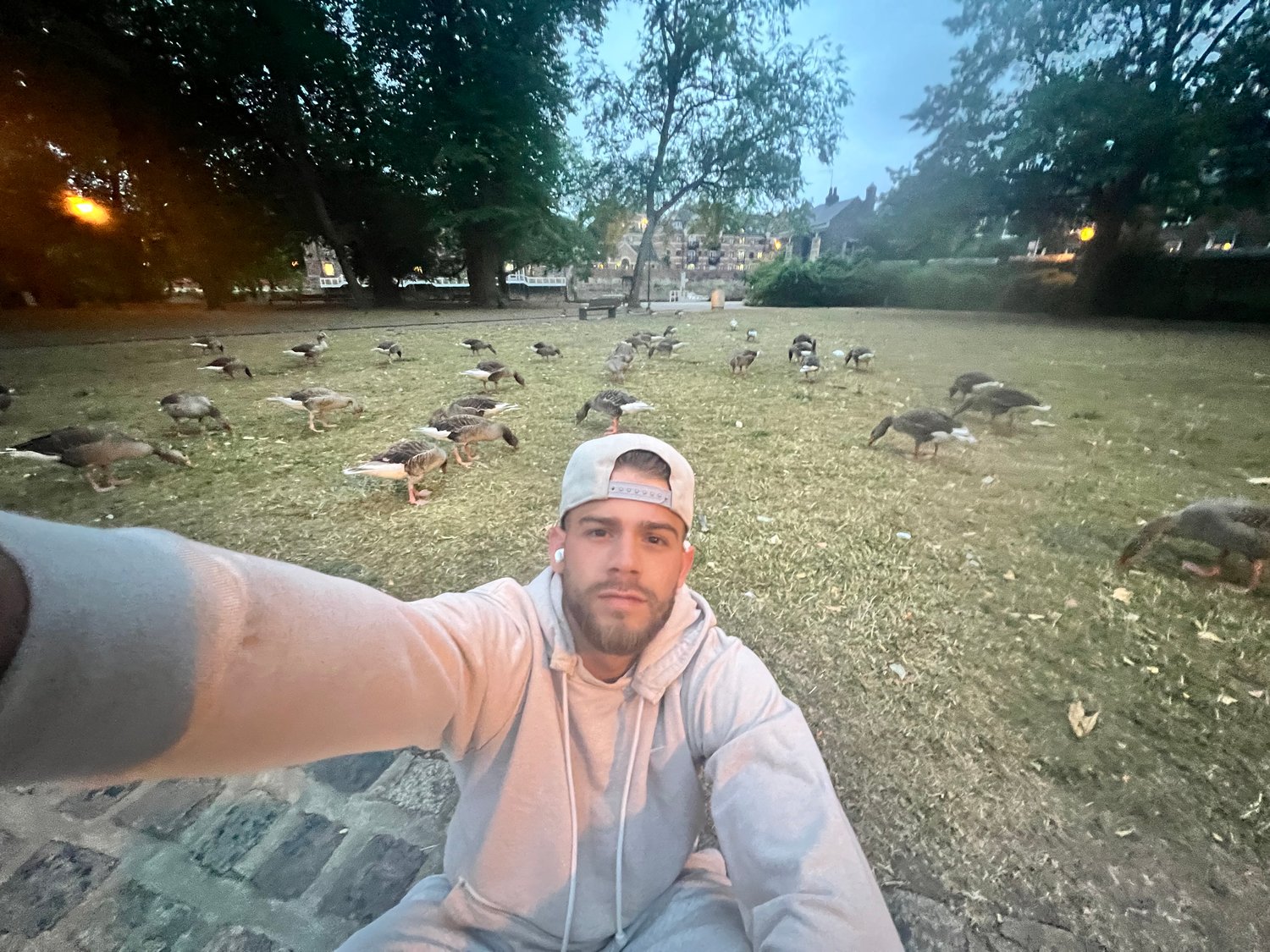Was near Piccadilly, the heart of the city.
Thanks to my dear friend M for the recommendation.
On the map, I’d seen Clifford’s Tower—and right beside it, another giant X marked the spot. So I decided to check it out.
And that’s how I ended up here:
Sitting on the cool stone edge of the path. Hoodie up.
Wrapped in the hush of dusk.
Surrounded by birds.
Gang shit.

A flock of them picking at the ground, heads bobbing, wings tucked close. It’s peaceful—almost sacred.
Until it isn’t.
All of a sudden, the birds stiffen.
Their heads rise in eerie synchrony.
Then, like a single creature with a thousand wings, they burst into motion—running toward the river’s edge but stopping just shy of the water.
They don’t flee completely. They wait.

Eyes scanning.
Listening.
Feeling.
About sixty seconds later, a man rounds the corner. Power-walking.
Rage burns in his eyes—a wrecking ball in human form. His energy hits the space like a silent explosion.

And I think of the movie Bird Box.
Because birds always know.
They sense subtle vibrations humans miss—the shift in the air, the spike of adrenaline, the ripples in invisible currents that warn of danger before it appears.
So the birds give him space.
They slide away, shifting left and right like water parting around a stone.
The man storms to the steps on the left. The birds, inching cautiously, begin reclaiming the right side of the path.
When people watch moments like this they say:
“Oh look, the birds are moving to the river. That’s what birds do!”
And they miss the signal entirely.
Because their eyes are open, sure—but not really seeing.
They don’t notice the way the flock froze a second before moving.
Or how every beak turned east, as if catching a vibration only they could hear.
Or how the birds waited, testing the air before deciding whether to fly or stay.
Because most people still haven’t opened the eyes behind their eyes.
So how do we help them see?
Well—for starters: stories like this.
Because stories pierce the ordinary. They slip past defenses and say:
“Look again. There’s more here than meets the eye.”
Photos help.
A single frame can capture a frozen truth—a posture, a gesture, a pattern in the birds that words alone might miss.
Videos? Even better.
Because you can feel the tension, the sudden hush, the ripple of energy running through feathers and grass.
You can see the invisible pulse that tells the birds to move.
This is why we tell stories.
Why we take photos.
Why we film the small things.
Because sometimes, a bird darting left instead of right is a message.
Sometimes, the world is whispering secrets.
And if we help people listen,
If we help them look beyond the veil,
We might just help them remember:
Everything is connected.
Nothing happens by accident.
And there’s always more to see.
So… What Should You Do When You See Nature’s Signal?
First off—don’t ignore it.
If the birds suddenly flee, if the wind drops silent, if the forest goes still as a held breath… pay attention.
Nature doesn’t panic for fun.
Pause. Freeze your next move. Just observe. Feel the air. Check the vibe.
Look deeper and ask yourself, “What shifted here?” Is it a person approaching? An unseen danger? An energetic change rippling through the space?
Trust your instincts. Like the birds, your body knows things your mind hasn’t caught up with yet. The hair standing on your neck, the churn in your gut—those are signals, too.
Adjust your path if you need to. You don’t always have to confront chaos. Sometimes wisdom is crossing the street, waiting a minute, or choosing another route entirely.
Stay humble. Don’t assume you know better than the flock. The geese might be your best spiritual advisors tonight.
And tell the story. If you witness a signal, share it. Stories train other eyes to see.
Because ignoring nature’s signals is how people end up saying, “I don’t know why, but I just had a bad feeling…” and then end up with stories they’d rather not tell.
So watch the birds. Watch the trees. Watch the silent spaces between sounds.
Because sometimes the difference between safety and chaos is knowing when to move like the flock.


